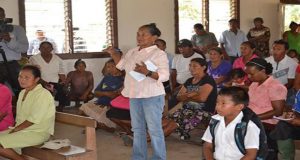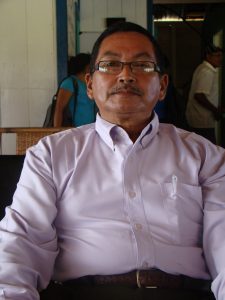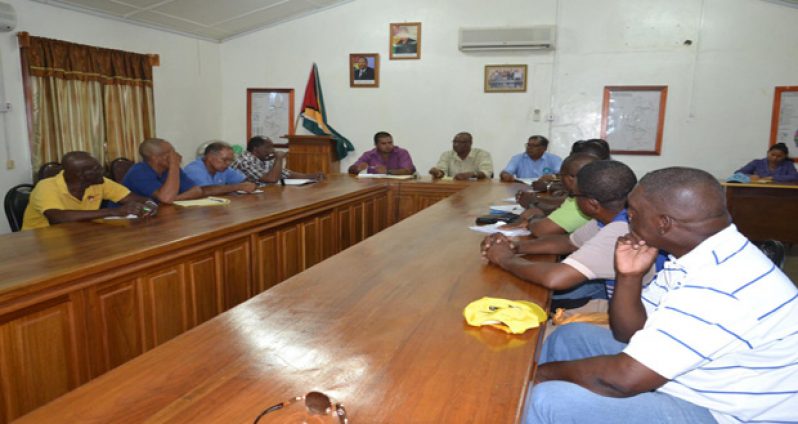AS residents of Lethem and the rest of Region 9 grapple with the effects of a mild El Nino weather, officials there are exploring a number of projects to cushion the impact while a broad-based ‘El Nino Committee’ is working out a drought mitigation and response plan.“Some places have creeks, but the creeks are drying out. Some places have lakes, but the lakes are drying out; the river has already gone to rock bottom,” Regional Chairman Bryan Allicock said, as he painted a grim picture of the current situation to the Guyana Chronicle yesterday.

It was explained that the volume of water in the wells is approximately 15 meters, 3 meters less than the average while the Rupununi River is now 13 feet below its normal height. “If it continues like this, by January we will really be looking for water to supply the people,” Allicock posited.
REDUCING IMPACT
However, the Regional Democratic Council (RDC) is exploring a number of avenues to reduce the impact, one of which is the installation of additional standpipes in villages that are severely affected. The Regional Chairman explained that when the standpipes are erected, water can be sourced from the drilled wells, noting that while the water levels in the wells may drop, they will not dry out completely.
Currently, there are 55 wells across Region 9 with more than 90% being photovoltaic (PV) system wells while the remaining 10% includes hand dug windmill wells and hand dug shallow wells with Mark 11 hand pumps.
Additionally, he said the regional officials are in discussion with a Trinidadian firm to source a solar system that has a combination of units, including a pump, a sanitizer and a filtration system. The utilisation of this unit will allow for the regional authority to access water from a well in Takutu that “never runs dry,” according to Allicock.
“We will pump water from a place in Takutu, behind the police station that is in Lethem, a place that has never run dry, but when we reach that stage, we would have to filter and purify the water in order to put it into the main for consumption,” he explained.
These proposals, Allicock said, will soon be placed before the Ministry of Communities, the Ministry of Indigenous People’s Affairs and the Civil Defence Commission (CDC).
“The engineer was telling us that up to December we are sure of having water but if we have no rain we are in trouble from now to May next year. So we will be convincing them that these projects are important and that we really need this.”
CASSAVA PRODUCTION
Meanwhile, in addressing the impact of the dry season on the production of cassava, Allicock said the situation is worrying but his office is encouraging farmers to plant their cassavas in low lining areas as against on the hill, until the Amazon sticks can be sourced from Brazil.

“We have to get the four months maturity stage cassava, we have a few in the region but we have to link up with EMBRAPA, the Brazilian counterpart because they are producing the four months maturity cassava,” he said.
It was further explained that the Brazilian Agricultural
Research Corporation (EMBRAPA) has developed the Amazon stick (or a maturity cassava stick) which grows to full maturity within four months. But Allicock said such a partnership with EMBRAPA must be recreated through the Foreign Affairs and Agriculture Ministries. If a partnership is established and EMBRAPA is willing to provide the Amazon sticks, Allicock said three to four Bedford trucks would be needed to do the distribution to farmers across the region.
‘EL NINO COMMITTEE’
In response to the impending El Nino drought, Allicock, Rene Edwards of Conservation International, Roger King of the Rupununi Chamber of Commerce, and Clairmont Lye of Beacon Foundation have formed themselves into a committee called the ‘El Nino Committee’.
Minister of State Joseph Harmon and members of the CDC among other officials were in Lethem yesterday assessing the situation.
By Svetlana Marshall




.png)









